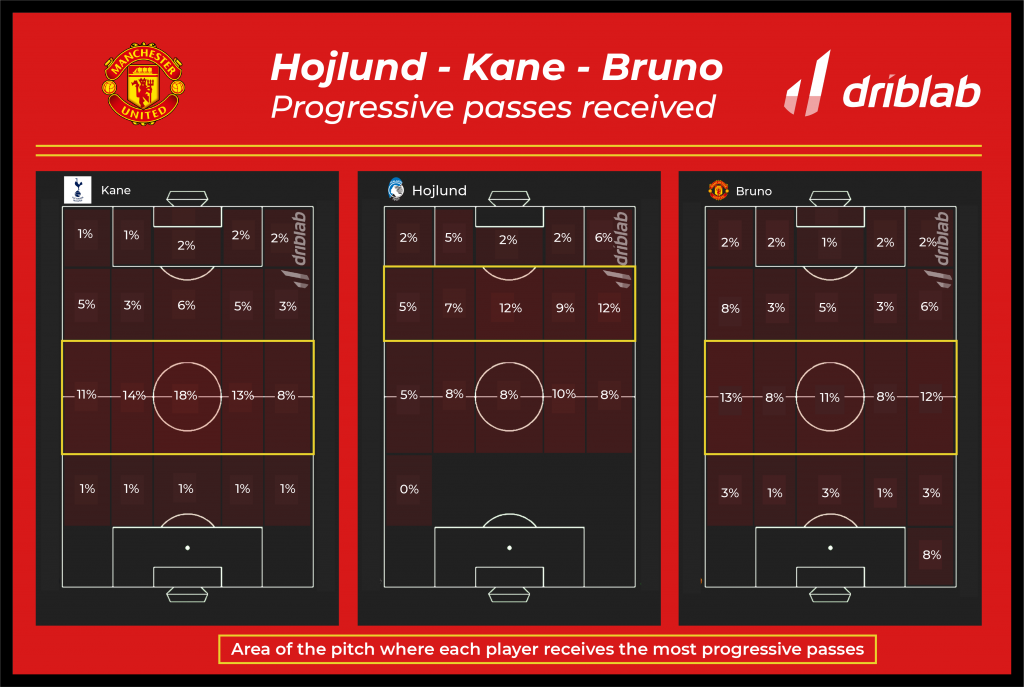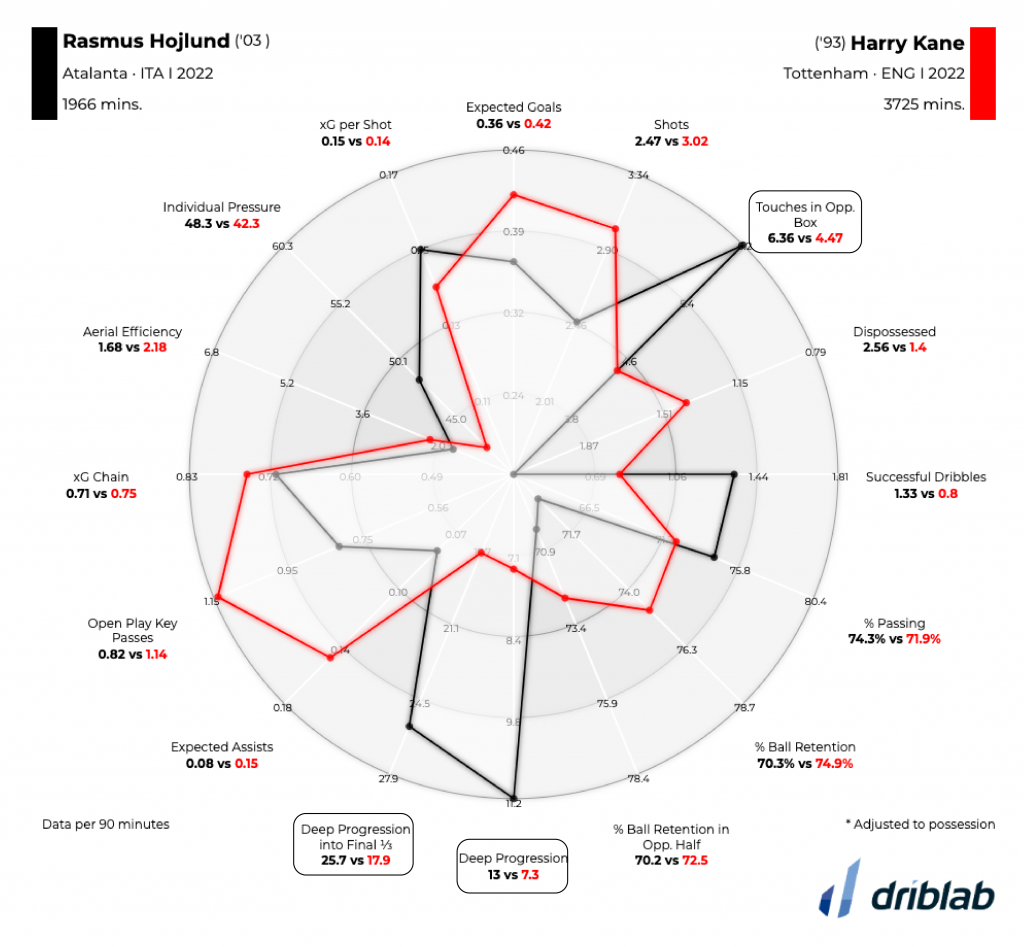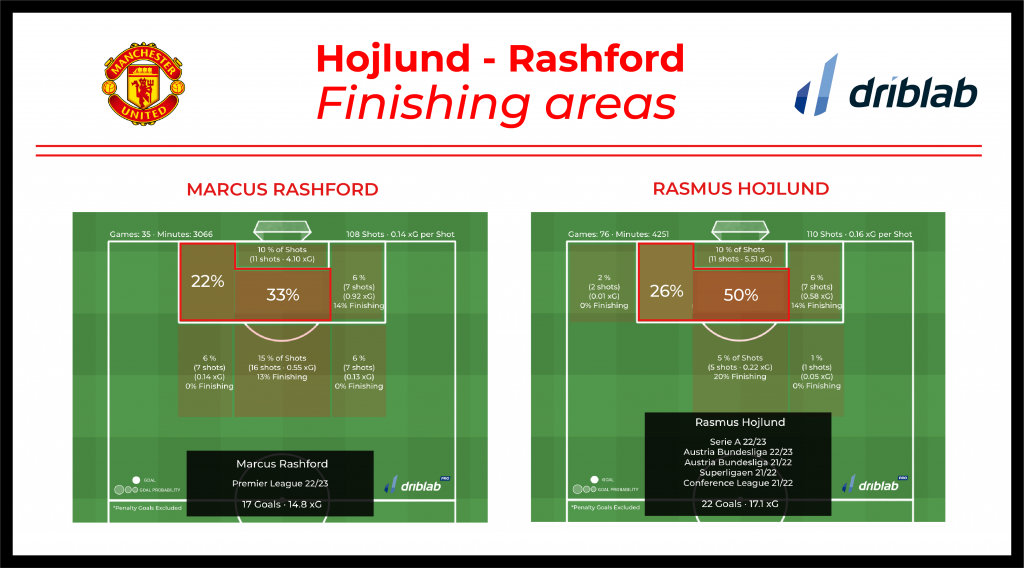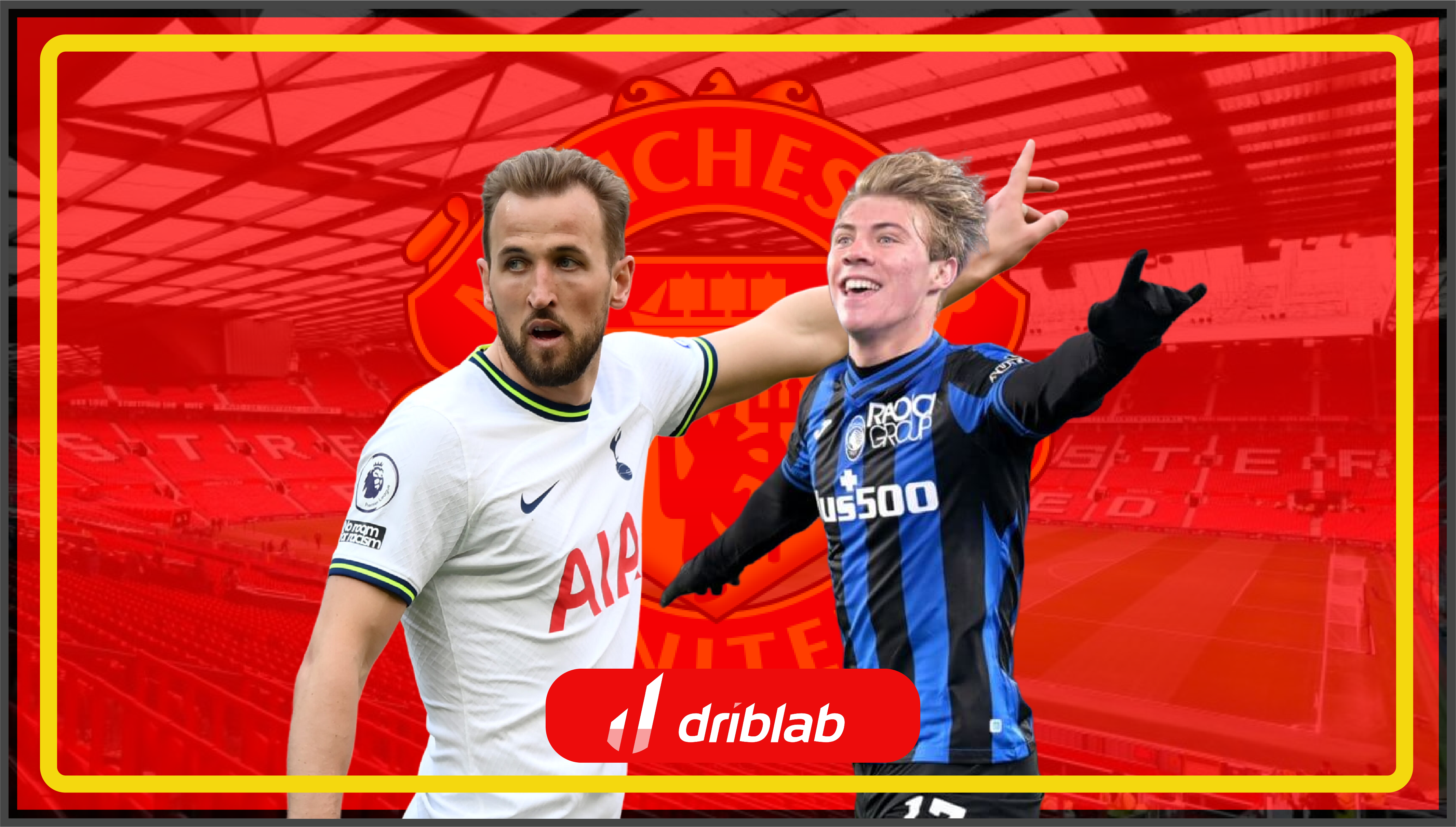It is common knowledge that Harry Kane is one of the most talented strikers to organize his team’s play from the ‘9’ position. A faculty that gives his teams a unique advantage even when he has very little time on the ball, taking advantage of his movements to allow others to run into space. If we add to that his impressive scoring ability and Manchester United’s need to sign a ‘9’, the union seemed highly probable.
Understanding that many other factors play a role, asking why United preferred Hojlund before trying to sign the Tottenham striker, who was no longer an option for Manchester City (Haaland, Julian), Arsenal (Gabriel Jesus, Havertz), Chelsea (never showed interest) or Liverpool (Gakpo, Darwin) is interesting, above all, from a footballing point of view. And the data will help us to go deeper into an assumption to give rise to real content or situations that can be contrasted with metrics and visualizations adapted to them.
Seeing how Erik ten Hag has been gaining great weight in the club’s decisions (for example, with the change of Onana for De Gea), it is worth asking why he has chosen Hojlund. Continuing with Kane’s virtues, the ‘9’ spur goes down a lot to receive passes from his teammates to direct the attack and accelerate or temper the game depending on the situation. Playing so far away from goal, his incoming passes are close to midfield and his subsequent passes look for spaces and the speedy runs of his teammates, such as Son, Moura or Richarlison at different stages. In other words, Kane occupies zones and plays a very important role, which must be coordinated and compatible with the role of other teammates.

This is a triptych showing the progressive passes received (passes that progress 10 meters or more in possession with respect to the opponent’s goal) by Harry Kane, Rasmus Hojlund and… Bruno Fernandes. The Portuguese is not just another player at Manchester United. Since his arrival, his personality has been gaining importance, leadership and influence over the team’s play. And although Bruno moves all over the field, in many situations he occupies areas and takes responsibility in volume and role very similar to Kane.
To compare similar cases, we could go to the case of Christian Eriksen, another midfielder with similar characteristics to Bruno but with a slightly different role in the organization and a less strong personality than the Portuguese, who likes to lead, receive between lines and create scoring chances from the key pass, the free kick or penalty, and a constant participation ahead of the midfielders. A reason to take into account in the fit of a player like Kane. If we look at the triptych above we see that Kane and Bruno receive in very similar areas and at very similar times. They both position themselves very well to receive in areas that do damage to the opposing midfield and then launch their teammates generating possible counter attacks or very quick attacks.
Why Rasmus Hojlund?
It was obvious that Manchester United lacked a ‘9’ of level and characteristics that they did not have. Neither Cristiano Ronaldo nor Wout Weghorst were up to the aspirations of the Old Trafford side. Hojlund, in addition to a great finisher, is above all other virtues, a striker with great movements into spaces, who always looks for and finds clear shooting situations inside the area and winning the backs of defenders. In this comparison, we highlight in a box three metrics where Hojlund responds better to what Ten Hag wants than Kane: not occupying areas similar to Bruno, much more depth in the last 30 meters of the field and more touches in the box per 90 minutes. He is a simpler and more specific player, with a more direct and finishing mentality. Moreover, his movements are so precise and his shot selection so specific that the quality of his chances is, on average, very high (0.16 xG per shot in the last five competitions played, i.e. the position of his shots had an average 16% chance of being a goal).

Hojlun and Rashford, a reasonable doubt?
If with Bruno it seems that Hojlund would fit well for complementary characteristics and movements, the doubt could be with Rashford. One of the particularities that Hojlund has as a finishing striker is that he shoots much more from the left side of the box. He is a left-footed striker who hardly shoots from the right side of the box. And that can mean slowing down or getting in the way of the movements and shots of Marcus Rashford, the team’s star striker. One more reason to see how Hojlund’s first steps will be, surrounded by demanding players with a lot of leadership, personality and hierarchy, whom he will have to convince of being a great option to finish attacks.

Founded in 2017 as a consultancy, Driblab has driven innovation through data in all aspects of professional football. Thanks to a transversal model, its database collects and models statistics in all directions. From converting matches and videos into bespoke data for training academies to developing cutting-edge technology, helping clubs, federations and representative agencies in talent scouting and transfer markets. Driblab’s smart data is used by clubs all over the world, with success stories such as Dinamo Zagreb, Real Betis and Girondins Bordeaux among others. Here you can find out more about how we work and what we offer.














